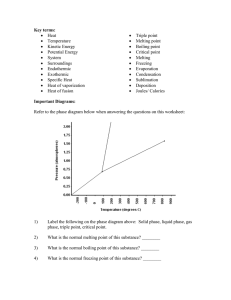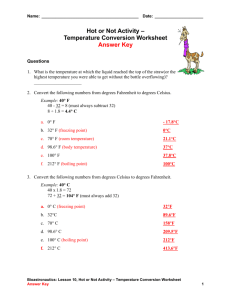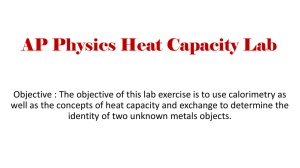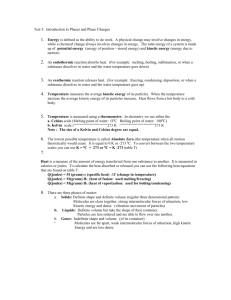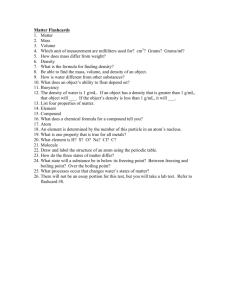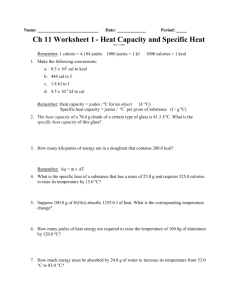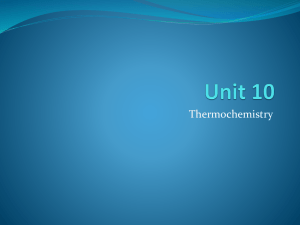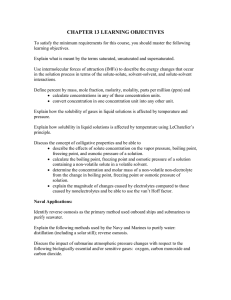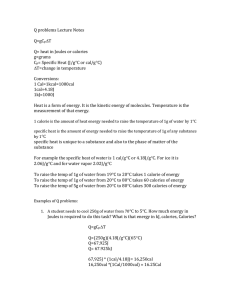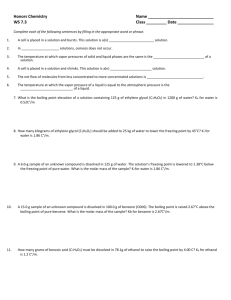Document
advertisement
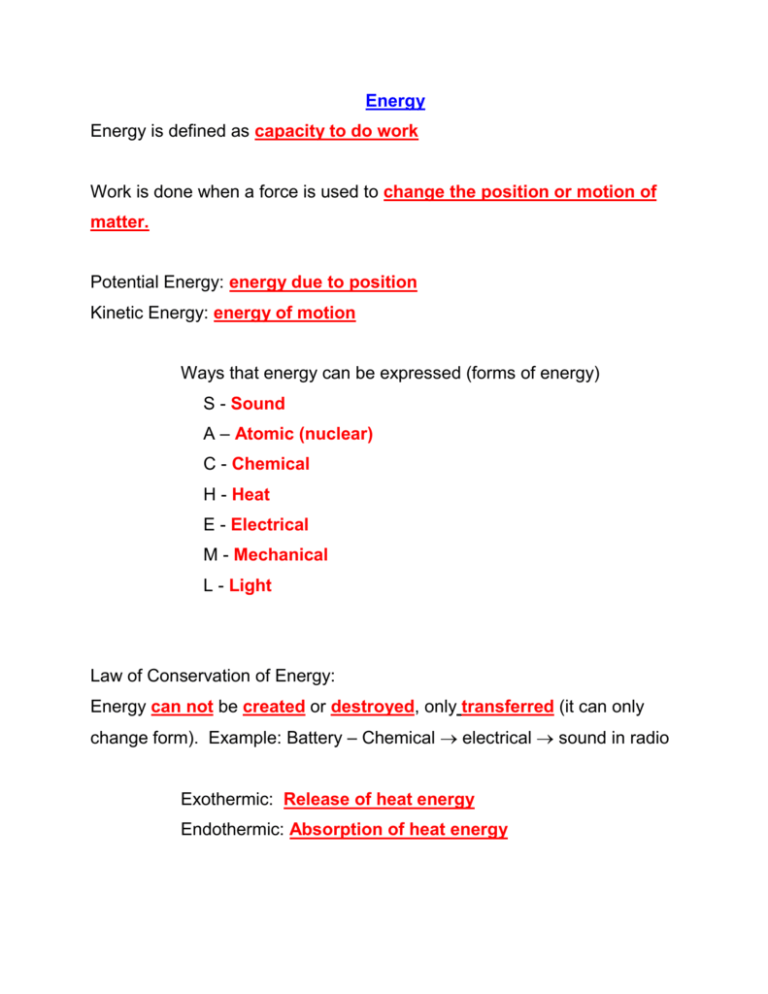
Energy Energy is defined as capacity to do work Work is done when a force is used to change the position or motion of matter. Potential Energy: energy due to position Kinetic Energy: energy of motion Ways that energy can be expressed (forms of energy) S - Sound A – Atomic (nuclear) C - Chemical H - Heat E - Electrical M - Mechanical L - Light Law of Conservation of Energy: Energy can not be created or destroyed, only transferred (it can only change form). Example: Battery – Chemical electrical sound in radio Exothermic: Release of heat energy Endothermic: Absorption of heat energy Heat - Always goes from high temperature to low temperature Hot Pack-Heat flows from the pack to your body Cold Pack-Heat flows from your body to the pack Measurement of Energy: Thermometer: a device used to measure the temperature of a system Temperature is the average kinetic energy of a substance. NOTE: a) Heat is NOT in the definition b) Average is of all the particles in the sample. Thermometry: Celsius and Kelvin are the two scientific temperature scales. Boiling Point: temperature at which liquid becomes a gas Freezing Point: temperature at which liquid becomes solid For water at Standard Pressure (1 atm or 101.3kPa) Boiling Point is 100C or 373 K Freezing Point is 0C or 273 K To convert form one temperature scale to the other: C to K C + 273 = K K to C K – 273 = C Absolute Zero: The theoretical temperature at which all molecular motion ceases. (0K or -273C) STP stands for: Standard temperature (273 K) and pressure (1 atm) This information can be found on Table A Calorimetry: Process of measuring heat exchange during a reaction Calorimeter: device that uses changes in temperature of water to measure heat exchange during a reaction. Calorie (cal): a unit of heat energy – amount of heat needed to raise the temperature of 1g of water 1C. Joule (J): a unit of heat energy 4.18 are needed to raise the temperature of 1g of water 1C Specific Heat (C): amount of heat energy needed to raise the temperature of 1g of any substance by 1C. For Water: Specific Heat = 4.18J/g K or 1 cal/g K FORMULA: q = mCT Where: Table T q = heat m = mass C = specific heat T = change in temperature Example: How many joules of heat are absorbed by 45g of water when the temperature of that water is raised from 293K to 323K? Step 1: q = mCT write the formula Step 2: q = identify the variables m= C= T = Step 3: q = plug into formula with units Step 4: q = solve (don’t forget units!) A reaction chamber inside a calorimeter contains 245g of water at 23C. After the reaction, the temperature of the water is at 28C. How many joules were released during the reaction? Step 1: Step 2: Step 3: Step 4: If the amount of energy being calculated occurs during a phase change you must use one of the two following formulas: q=mHf or q=mHv q=heat q=heat m=mass m=mass Hf=heat of fusion Hv=heat of vaporization *this is for *this is for solid/liquid liquid/gas How much energy is required to completely melt 25g of ice? How much energy is absorbed as 10g of water turns to steam?
